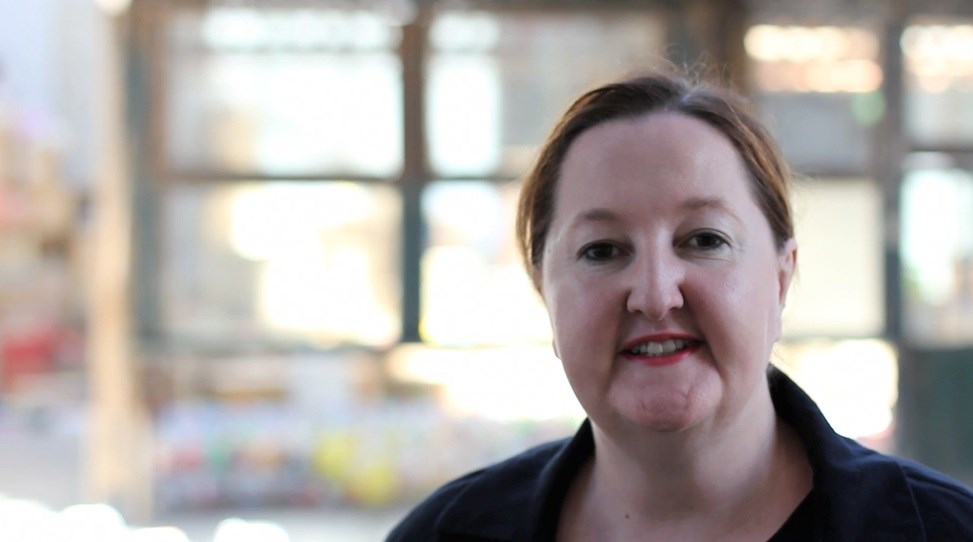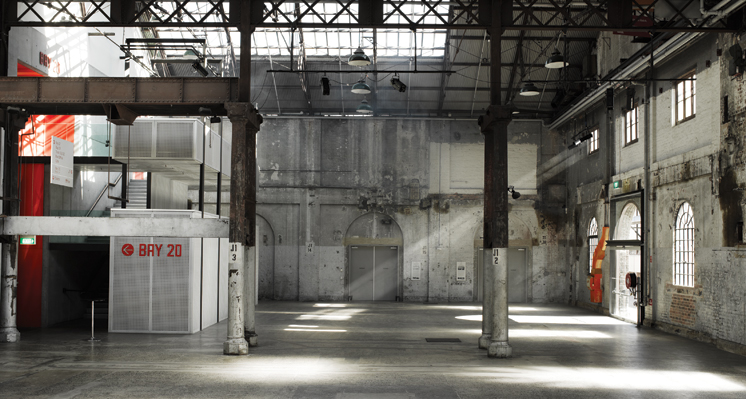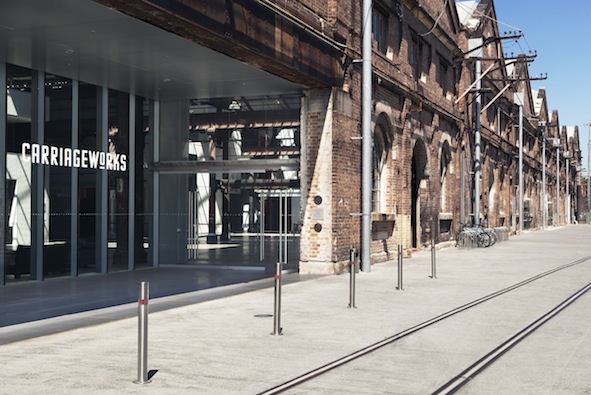
Sydney’s Carriageworks is something of a chameleon. The performance venue-cum-exhibition space-cum-convention centre-cum-installation hall wears its savvy flexibility on its sleeve, and its ability to cater for just about any occasion has proven to be both commercially and artistically fruitful. 2015 has been one of Carriageworks’ most successful years since it reopened its doors in 2007 to begin the next phase of its 127 year life as an artistic hub. Over 790,000 people have passed through its doors over the past year, a 43% increase on 2014’s tally.
This astronomic swell of patrons, which has been consistently record-breaking over the past four years, is largely due to Director Lisa Havilah’s stewardship of Carriageworks. Her gusty, boldly forward-facing approach, and willingness to embrace experimental, pioneering work, has made this venue one of Australia’s most well-heeled and highly regarded contemporary multi-arts centres. As Havilah unveiled 2016’s season this morning, which has been tipped to be the most ambitious undertaking of Carriageworks to date, her choice of language – iron-clad words like “boundary-pushing,” “unrelenting” and “risk-taking” – speaks to a fearless and decisive vision that bucks the trend of the play-it-safe programming now all too familiar at many of Australia’s top venues. But it’s an approach that is paying dividends for Carriageworks, with projected attendance by 2021 – in excess of 2 million visitors – making it one of the busiest venues in the country.
 Carriageworks Director Lisa Havilah
Carriageworks Director Lisa Havilah
It’s perhaps telling that organisations hoping to reach untapped audiences are turning to Carriageworks to borrow the street-cred it now boasts. The Sydney Symphony Orchestra, for example, announced earlier this year that its new Artist in Residence, Brett Dean, would stage the orchestra’s new contemporary music programme at Carriageworks, circumnavigating the tradition-minded and arguably modern-phobic audience it usually draws to the Sydney Opera House. Similarly Sydney Dance Company’s annual New Breed production, which presents the work of emerging choreographers exploring the outer reaches of modern dance, has become an annual fixture. Sydney Festival has often staged its most cutting edge work at Carriageworks, but in 2016 several of the flagship productions of outgoing Festival Director Lieven Bertels’ swansong programme will be presented there. This includes the headline show: Tom Waits and Thalia Theatre Hamburg’s Woyzeck, as well as modern dance icon Anne Teresa De Keersmaeker’s Vortex Temporum, and French circus-dance theatre fusion, Fall Fell Fallen, by “classically trained” tightrope walker Sebastien Le Guen.
So what makes Carriageworks such a comfortable fit for those artists whose work won’t usually fit comfortably in conventional venues? With its exposed brick walls, iron girders and corrugated roofed tram sheds, Carriageworks is conspicuously not your common or garden concert hall or theatre, and yet it subtly boasts all the mod-cons and front of house facilities of a 21st century performance space. The urban grime of its municipal history as a tram depot is visible wherever you look, yet these relics of its past are polished, refined, and softened into the carefully converted interiors. What Carriageworks achieves is essentially a grand illusion: on a psychological level it is unburdened of the stuffy pretension or fickle commercialism of other venues, and yet pragmatically it offers all the technical accoutrements that the many visiting companies, both domestic and international, require.

Perhaps most pertinently, Carriageworks seems to have effortlessly cracked one of the holy grails of the arts in the current era: the audience development conundrum. People intimidated or unengaged by more established venues seem far more willing to head to Redfern to attend a Carriageworks performance. It’s little wonder then that 2016’s offering features a number of new partnerships with some of Australia’s biggest events hoping to capitilise on this location’s magnetic attraction.
In February one of Sydney’s biggest tourist draws, the Gay and Lesbian Mardi Gras, will present Day for Night, which combines an exhibition of performance works by a range of queer artists set to soundscapes performed by leading electronic musicians. From March 18 until June 5, the Sydney Biennale, which celebrates its 20th event next year, will take over the entire Carriageworks complex to transform it into The Embassy of Disappearance. This immersive exhibition will feature works by Australian and international artists exploring themes such as absence, memory and the transience and disposability of the modern world.
In June Carriageworks will present the first in a series of partner exhibitions with another ground-breaking Australian institution, Tasmania’s MONA, the Hobart-based gallery run by millionaire art collector bad boy David Walsh. Several large scale contemporary installations will feature across the second half of 2016 including French artist Mathieu Briand’s interactive sound sculpture The Spiral and a retrospective of photographer Katthy Cavalerie’s visceral, thought provoking and deeply personal images.

The Carriageworks’ resident company, Sydney Chamber Opera, will present Artistic Director Jack Symonds’ Notes from the Underground, after the pyscho-drama by Dostoevsky. This world premiere is the culmination of six years development by the composer. In another first, Carriageworks will host the annual Peggy Glanville-Hicks address, delivered by curator and scholar Nicole Canham, who will reflect on the challenges facing composers in the 21st century.
Perhaps most notably, in November American artist Nick Cave will present his first major project in Australia at Carriageworks, as part of the City of Sydney’s Art & About Festival. Nick Cave: Heard will involve 60 dancers and musicians in the kind of immersive, large scale event that has become Carriageworks’ stock and trade.
Looking back on Lisa Havilah’s comments on 2016’s programme, peppered with indomitable adjectives, there is one other, softer word that seems crucial to the success of Carriageworks: “community.” This venue has cultivated a sense of uncomplicated accessibility, presenting challenging, sometimes highly experimental works from the avant garde extremities of the arts, but in a way that feels inclusive, approachable and down right cool. It may well be an inscrutable formula for many venues, but the example Carriageworks is setting, as well as the box office revenues it’s taking, will surely become heralded as the template of choice by future arts leaders.
Full details of Carriageworks’ 2016 season is available now.












Comments
Log in to join the conversation.